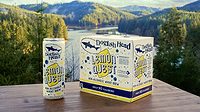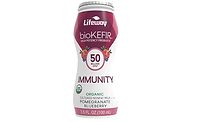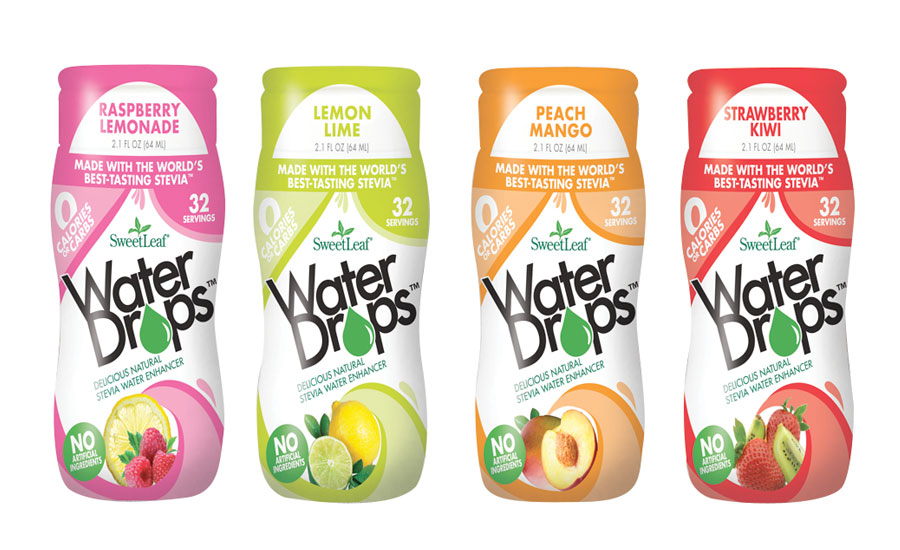Health and wellness trends drive sweetener choices in beverages
New specialty sweeteners, formulations provide natural options



PureCircle unveiled a new stevia ingredient, Sigma-T, at the IFT Annual Meeting & Food Expo. Optimized for use in tea, Sigma-T has a clean sweetness profile, reduced astringency and bitterness, and a sweet aftertaste that performs parity to sugar at mid-level sugar reductions, the company says. (Image courtesy of PureCircle)





Obesity rates have more than doubled in adults and children since the 1970s, according to the Centers for Disease Control and Prevention. Approximately 78.6 million adults are overweight or obese, with 12.7 million children and adolescents in the same category. To combat this major public health problem that contributes to heart disease, diabetes and stroke, the Balance Calories Initiative was enacted in 2014 by the Washington-D.C.-based American Beverage Association (ABA) to reduce beverage calories consumed by each person nationally by 20 percent by 2025.
ABA partnered with the New York-based Alliance for a Healthier Generation for the national multi-year effort, which sprang from the Smart Snacks in School regulation enacted by the U.S. Department of Agriculture (USDA) last July.
Beverage manufacturers and American consumers are paying attention, demanding great taste without sugar and healthier “natural” clean-label products, ingredient suppliers say. They add that health and wellness, sugar reduction or replacement, and enhanced functionality all are trends affecting the use of sweeteners in beverages.
“Consumers are becoming more mindful of sweeteners and health. Overall, this mindfulness is translating into decreased soda sales, but it isn’t changing the fact that consumers buy soda made with all types of sweeteners,” says Sara Martens, vice president of The MSR Group, Omaha, Neb.
She cites the 2014 “Sweetener360” report commissioned by the Corn Refiner’s Association and completed in part by Nielsen and Mintel Consulting, which sheds light on consumers’ attitudes and behaviors toward carbonated soft drinks (CSDs) for six consumer segments. “Research tells us that consumers might say they avoid specific sweeteners in soda, but all age groups — millennials, Gen x-ers and baby boomers — are still buying soda formulated with all types of sweeteners,” Martens says.
Gilbert, Ariz.-based Wisdom Natural Brands says consumers are looking for less sugar or no sugar at all in their beverages, along with great taste and no artificial sweeteners. “We work to educate consumers that they can have zero calories and still have great taste,” Chief Operating Officer Michael May says. “Consumers also are looking for functionality in beverages such as energy, electrolytes and the like.”
Although some consumers are willing to limit the amount of caloric sweeteners they consume, most want a broader range of natural options that don’t compromise on taste, says John Martin, global director of technical development and innovation for PureCircle, Oak Brook, Ill.
As an example of this trend, the top claim for new product launches in the ready-to-drink (RTD) iced tea category in the past three years was “natural,” he says. “The use of stevia as a non-caloric sweetener choice is on the rise globally for new product launches and has experienced a five-year growth rate in beverages of 67 percent per year,” Martin says, citing Mintel data.
Wisdom Natural Brands offers a line of organic and natural stevia extracts in powders, liquids and blends that have been certified organic by Quality Assurance International (QAI) and verified non-GMO. These sweeteners, along with the company’s monk fruit extract sweeteners and blends, can be used in water, dairy, RTD teas and sodas.
Sugar reduction
PureCircle’s Martin adds that beverage-makers are adopting a number of different strategies to reduce sugar and other caloric sweeteners in beverages from partial to total reductions.
“One of the most successful innovations is replacing sugar or partially replacing sugar with natural, zero-calorie sweeteners such as stevia. This strategy addresses the consumer desire for naturally sourced, no-calorie sweetness,” Martin says.
Luis Ferrey, beverage marketing manager at Westchester, Ill.-based Ingredion Inc., agrees. “Sugar reduction is the most relevant trend impacting the beverage industry, and it’s affecting almost all segments,” he says. “Beverage companies respond to new consumer needs by developing great-tasting new products either with no sugar, using only high-intensity, natural sweeteners like stevia and erythritol, no sugar meaning unsweetened beverages, or reduced-sugar formulations with either a combination of stevia and sugar, or other alternatives like fruit juices, agave or honey, which despite their calories, add a ‘natural’ charm to their products.”
Ferrey adds that consumers are looking for “cleaner” labels using simple and minimally processed ingredients, no artificial flavoring, coloring agents or preservatives. Consumers also want increased functionality. “Today’s consumers want more than just hydration and refreshing fun,” he says. “They want added benefits like energy, nutrition, relaxation and balance.”
Although consumers are looking for healthier beverage options, Hoffman Estates, Ill.-based Tate & Lyle’s Senior Vice President of Global Applications, Luis Fernandez, says consumers are unwilling to sacrifice great taste. “It’s up to us as ingredient suppliers to provide beverage manufacturers with a sweetening toolkit that meets consumer demand for the best of both worlds – taste and health,” Fernandez says.
Ihab E. Bishay, senior director of applications development for the Itasca, Ill.-based Ajinomoto North America Inc., adds: “Consumers have become wary of ingredients that don’t deliver on the promise of taste. Taste is what drives product success. If a consumer becomes disappointed by a beverage’s taste profile, they will not become repeat customers.”
A new family of sweeteners
Reducing calories and sugar is a hot topic for beverage manufacturers, says Scott Fabro, global director of high intensity sweeteners at Wayzata, Minn.-based Cargill, which offers a number of specialty sweeteners, including ViaTech stevia-based sweeteners and Zerose erythritol, that provide manufacturers with product formulation solutions to reduce both calories and sugar.
Fabro adds that when these sweeteners are used in combination, they can help improve sweetness quality and intensity while optimizing formulation costs. To demonstrate its capabilities, Cargill has developed reduced- and zero-calorie beverage prototypes in soft drinks, milk, waters and more.
“Part of what sets the ViaTech portfolio apart from other stevia-based sweeteners is Cargill’s proprietary taste-prediction model, which can precisely predict which combination of steviol glycosides will deliver optimal taste and sweetness.” Fabro says. “Zerose erythritol is a zero-calorie bulk sweetener that can be used to help round out the sweetness profile of stevia and replace the mouthfeel or textural effects of sugar in applications.”
Also understanding beverage-makers’ need for low-calorie solutions, Tate & Lyle recently launched Dolcia Prima Allulose, which offers fewer calories. “Dolcia Prima provides the satisfying mouthfeel and sweetness of caloric sugars, but with 90 percent fewer calories,” Fernandez says.
The sweetener works across a wide variety of beverage applications, including CSDs, teas and flavored water. At the Institute of Food Technologists (IFT) Annual Meeting & Food Expo in July, Tate & Lyle unveiled its prototype root beer craft soda with 50 percent fewer calories and 25 percent fewer sugars than traditional root beer.
The soda also featured Tasteva Stevia Sweetener, another brand in Tate & Lyle’s arsenal, which “created a unique synergy to enhance the sweetness of the beverage with a clean taste and no bitter aftertaste,” Fernandez says.
Food scientists often spend years researching and developing the newest taste innovations. PureCircle announced a new line of stevia ingredients at IFT that involved more than a decade of research and development.
The PureCircle Matrix Solutions family includes new stevia ingredient Sigma-T, a sweetener with a clean sweetness profile, reduced astringency and bitterness, and a sweet aftertaste that performs parity to sugar at mid-level sugar reductions, the company said in a statement. It joins the first product in the Matrix Solutions Family, Sigma-D, a dairy-specific ingredient with a clean sweetness profile and preference to Reb A on key attributes, such as bitterness and licorice aftertaste, it added.
These new products have been optimized for specific category applications and perform more similarly to sugar enabling deeper calorie reductions, the company says.
“The ingredients significantly outperform first generation Reb A solutions and come from our deep understanding of steviol glycoside research,” Martin says. “To see them perform similar to sugar on key attributes in our sensory panels is really an accomplishment.”
Ingredion also has a wide portfolio of sweeteners, including Enliten, a single cultivar, high-potency stevia that is naturally based and sourced in America.
“We also offer sweeteners from agave, a wide range of polyols like erythritol, or simple well-known options for cost-effective formulas like glucose or fructose syrups,” Ferrey says. “Our portfolio also includes popular artificial high-intensity sweeteners like aspartame, acesulfame K and sucralose, so we can formulate reduced-sugar and sugar-free beverages with consistent quality and reliable supply.”
Artificial sweeteners also remain a calorie-reduction source for beverage manufacturers. Ajinomoto North America introduced its high potency sweetener more than 25 years ago, and it is used today in more than 6,000 products in more than 125 countries, the company says. “Aspartame has revolutionized the beverage industry,” Bishay says. “It is made up of components already naturally occurring in common foods and beverages such as dairy products, grains, meats and juices, so it is naturally metabolized by the body.”
In 2014, the company announced that its Advantame sweetener successfully completed the food additive petition process for general use in foods and beverages according to U.S. Food and Drug Administration (FDA) standards. Advantame has a clean sugar-like taste, functionality and low cost so that it can be used to partially replace caloric sweeteners and other high-potency sweeteners in a wide variety of beverages, Bishay adds.
Changing the beverage landscape
Food scientists across the country are constantly innovating and searching for new products that will resonate with beverage manufacturers and consumers, ingredient suppliers say.
Wisdom Natural Brands’ May says most companies know flavor, but don’t know how to make sweeteners taste right in their flavor. “More manufacturers are looking for less artificial ingredients,” he says. “They want sweeteners that are natural.”
Formulating beverages is all about synergy, according to Tate & Lyle’s Fernandez.
“Sweetener synergies enable food and beverage producers to efficiently create low-calorie sweetener blends with the right sweetness intensity and right mouthfeel,” he says.
But getting the sweetener variables right can be difficult because high-potency sweeteners often plateau at higher sweetness levels. He notes that using Dolcia Prima Allulose along with Tasteva Stevia Sweetener can prevent this occurrence.
“When formulating with Dolcia Prima, the amount of Tasteva can be reduced by more than 40 percent to achieve a 10 percent sugar equivalence,” Fernandez says.
PureCircle’s Martin says that customized sweetening solutions are the new normal in the beverage industry. “It’s no longer OK to just offer a one-size-fits-all solution,” Martin says. “Different beverage matrices have different sweetening needs. We’ve demonstrated this with Matrix Solutions. For example Sigma-T has a clean sweetness profile, with reduced astringency, bitterness and sweet aftertaste that performs in parity to sugar at mid-level sugar reductions in tea.
“There are many steviol glycosides, and they have different taste characteristics and sweetness onsets,” he continues. “We’ve put together the ones that give tea a superior taste. Sigma-T was optimized for use in tea.”
On the horizon
Greater understanding around stevia and various steviol glycosides, improving ingredient offerings and technology development will continue to spark the beverage industry. Giving manufacturers ways to connect with consumer insights also will be important.
Ingredion offers Dial-In technology that combines consumer insights with proprietary analytics and deep category expertise that allows the company to work with beverage companies in any sweetener-texture system, making it easy to reduce sugar, simplify labels and enhance nutrition, it says.
Cargill’s Fabro says technology around fermentation has opened up new doors in the sweetener space. “Our research indicates that Reb M and Reb D are sweeter and have less aftertaste than Reb A,” he says. “We’re working on making a Reb M and Reb D product from fermentation that improves sweetness without the bitterness or licorice aftertaste associated with stevia leaf extracts at high use levels.”
Ajinomoto’s Bishay predicts that sweeteners will be used more and more as tools to innovate great-tasting products instead of being a showcase ingredient. “With all the technology and recent advances, we are on the brink of some very exciting technological and taste advances,” he says.
The MSR Group’s Martens adds that Mintel research documents that consumers are fairly indifferent to sweetener type. “Even the consumer segment that claims to be the most ‘sweetener aware’ is nearly five times more likely to be concerned about total sugars than high-fructose corn syrup,” she says. “This indicates that a strategy to reduce total sugars would address true consumer demand. With the trends of health and wellness gaining traction, there will continue to be a buzz around sweeteners.”
Looking for a reprint of this article?
From high-res PDFs to custom plaques, order your copy today!










